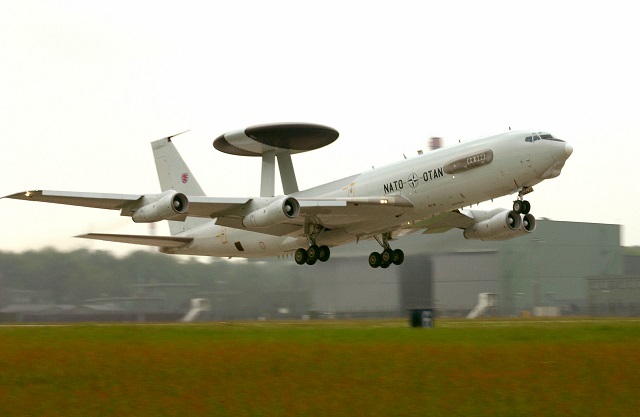NATO’s 16 Boeing E-3A airborne early warning and control system (AWACS) aircraft could soon be supporting the defence needs of member nations, freeing up local assets for coalition operations against the Islamic State terrorist group in Iraq and Syria.
The proposal by Turkey, Greek and Germany received in-principle support at a meeting of NATO defence ministers in Brussels this week.
According to NATO secretary general Jens Stoltenberg, members of the military alliance have agreed to bolster surveillance operations along the Turkey-Syria border and use NATO E-3As to “backfill” the national capabilities of members.
“All NATO allies contribute and support the efforts of the international coalition fighting ISIL but NATO as an alliance is not a member of the coalition,” Stoltenberg says at a press conference today. “We support the efforts of the coalition and today we agree that we will provide support by using or providing NATO AWACS airplanes for back-filling national capabilities, and we also agreed that we will increase our surveillance of the Turkish-Syrian border.”

NATO
The alliance’s operates 16 E-3As and was considering reducing the fleet to 14 to cut costs and the manpower burden as Boeing installs new flight deck and makes other system enhancements.
US defence secretary Ashton Carter said at a press conference in Brussels today that those aircraft will now take the place of other airborne early warning assets being diverted to the counter-terrorism effort in the Middle East.
“NATO AWACS can be employed to take the place of some of those assets,” he says.
Based in Geilenkirchen, Germany, the fleet is augmented by the six Royal Air Force owned and operated E-3Ds. The radome atop the Boeing 707-based E-3 can detect airborne threats up to 400km away. Turkey received its fourth and final 737-based "Peace Eagle" airborne early warning and control (AEW&C) aircraft from Boeing last year.

NATO
Source: FlightGlobal.com























